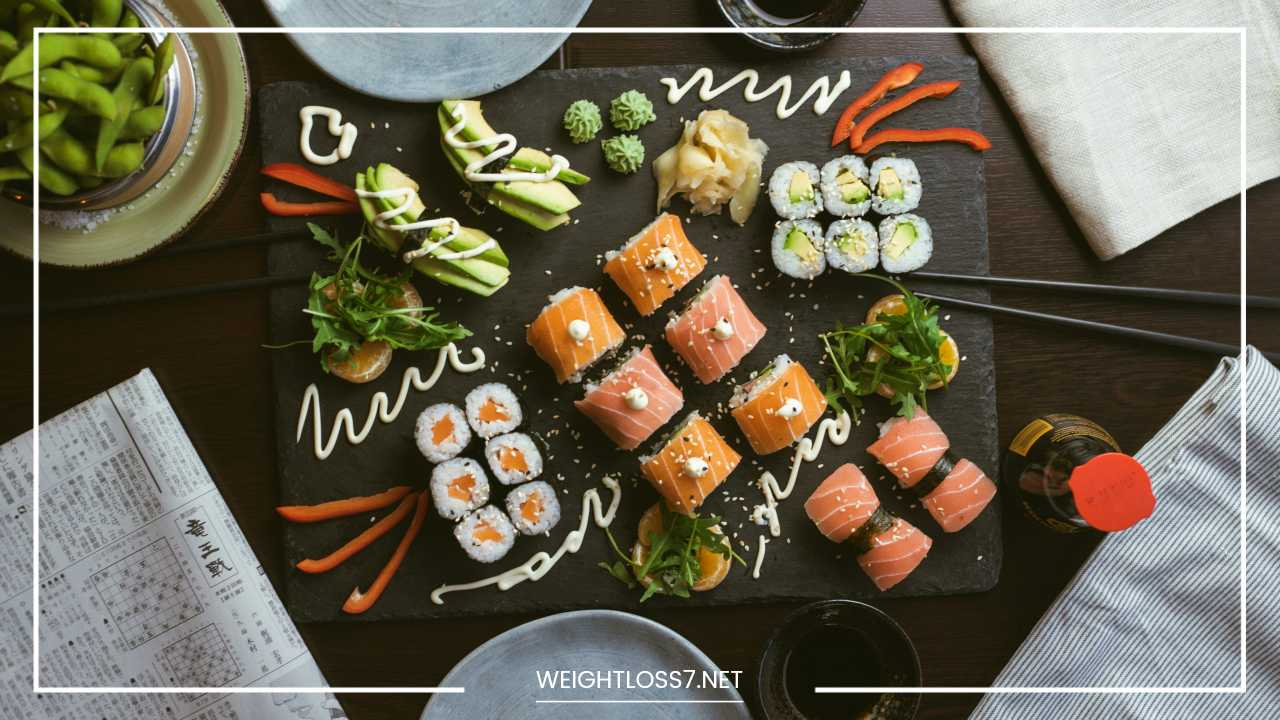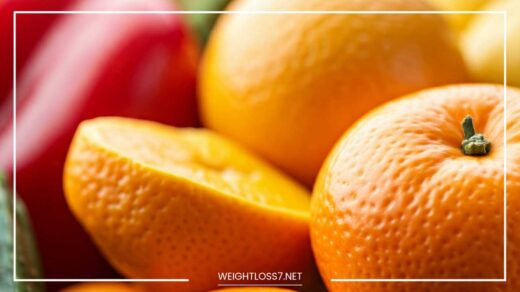Weight Loss Eating Plans: Shedding Pounds & Building Healthy Habits

Weight Loss Eating Plans
Shedding Pounds for a Healthier You: A Comprehensive Guide to Weight Loss Eating Plans
Dieting. The word itself can conjure up images of bland salads, tasteless meals, and relentless hunger pangs. But what if weight loss wasn’t about punishment and restriction?
What if it was about cultivating a sustainable, healthy relationship with food that empowers your body to reach its goals?
This comprehensive guide dives deep into the world of weight loss eating plans. We’ll explore different approaches, guide you through essential elements for success, and offer practical tips to help you navigate your weight loss journey.
Remember, the most effective plan is the one that aligns with your lifestyle, preferences, and overall health goals.
Understanding Weight Loss and the Calorie Equation
Before we delve into specific plans, let’s establish a fundamental principle: weight loss boils down to burning more calories than you consume. This creates a calorie deficit, prompting your body to tap into stored fat for energy.
How Many Calories Do I Need?
The answer depends on several factors, including your age, sex, weight, activity level, and goals. Consulting a doctor or registered dietitian is the best way to determine your specific calorie needs. However, here’s a general guideline:
- For weight loss, aim for a 500-750 calorie deficit daily. This translates to a safe and sustainable weight loss of 1-1.5 pounds per week.
Here’s a simplified breakdown to get you started:
- Women: Aim for 1200-1500 calories for weight loss.
- Men: Aim for 1500-1800 calories for weight loss.
Remember, these are just starting points. It’s crucial to personalize your plan based on your individual needs and consult a healthcare professional for specific guidance.
Demystifying Macronutrients: The Building Blocks of Your Diet
Understanding macronutrients – carbohydrates, protein, and fat – is essential for crafting a balanced and effective weight loss eating plan. Each macronutrient plays a vital role:
- Carbohydrates: These provide readily available energy for your body. Choose complex carbohydrates found in whole grains, fruits, and vegetables for sustained energy and a healthy fiber intake.
- Protein: Protein helps build and maintain muscle mass, which is crucial for boosting metabolism and promoting satiety. Include lean protein sources like fish, chicken, legumes, and lentils in your meals.
- Fat: Healthy fats from sources like avocados, nuts, seeds, and olive oil provide satiety, support nutrient absorption, and contribute to heart health.
Finding the Macronutrient Balance for You:
There’s no one-size-fits-all approach to macronutrient ratios. However, here are some popular methods:
- The Balanced Approach: This focuses on a balanced intake of all three macronutrients, with a typical breakdown of 40% carbohydrates, 30% protein, and 30% fat.
- The Higher Protein Approach: This prioritizes protein intake (around 30-40%) for increased satiety and muscle building, with moderate amounts of carbohydrates (30-40%) and healthy fats (20-30%).
- The Lower Carbohydrate Approach: This approach restricts carbohydrates (around 20-30%) to promote ketosis, a metabolic state where the body burns fat for fuel. However, this approach should be discussed with a healthcare professional before implementation.
It’s important to find a macronutrient balance that aligns with your activity level, preferences, and overall health goals. Consider consulting a registered dietitian for personalized guidance.
Exploring Different Weight Loss Eating Plans: Finding Your Perfect Fit
Now, let’s delve into some popular weight loss eating plans, each offering unique benefits and drawbacks:
-
The Mediterranean Diet: This heart-healthy plan emphasizes fruits, vegetables, whole grains, legumes, and healthy fats like olive oil. It promotes moderate protein intake, primarily from fish and poultry. Benefits include reduced risk of heart disease, improved blood sugar control, and a focus on whole, unprocessed foods.
-
The DASH Diet: Designed to lower blood pressure, DASH focuses on fruits, vegetables, whole grains, and low-fat dairy products. It limits red meat, processed foods, and added sugars. Benefits include potentially lowering blood pressure, promoting heart health, and offering a balanced approach to nutrition.
-
The Flexitarian Diet: This approach encourages a mostly plant-based diet with occasional lean protein sources like fish or chicken. It’s flexible and allows for some meat indulgence. Benefits include increased intake of fruits, vegetables, and fiber, while still allowing for dietary freedom.
-
The Volumetrics Diet: This plan prioritizes low-calorie, high-volume foods like fruits, vegetables, and soups. It helps you feel full on fewer calories due to the high water and fiber content of these foods. Benefits include promoting satiety, potentially reducing cravings, and encouraging a focus on nutrient-dense choices.
- The Intermittent Fasting Diet: This approach cycles between eating and fasting periods. Popular methods include the 16/8 method (fasting for 16 hours and eating within an 8-hour window) or the 5:2 method (eating normally for 5 days and restricting calories on 2 non-consecutive days). Benefits include potentially improving insulin sensitivity, promoting cellular repair, and offering flexibility in eating patterns. However, it’s crucial to consult with a doctor before starting intermittent fasting, especially if you have any underlying health conditions.
Important Considerations When Choosing a Weight Loss Eating Plan:
- Sustainability: Can you see yourself following this plan long-term? Choose a plan that aligns with your lifestyle and preferences.
- Nutritional Adequacy: Does the plan provide all the essential nutrients your body needs? Consider consulting a registered dietitian to ensure you’re getting a balanced intake.
- Underlying Health Conditions: Discuss any pre-existing health conditions with your doctor before starting a new weight loss plan.
- Personal Preferences: Do you enjoy cooking? Do you have dietary restrictions? Choose a plan that caters to your individual needs and taste preferences.
Essential Elements for Weight Loss Success: Building Healthy Habits
Beyond choosing a specific plan, here are key elements for success in your weight loss journey:
- Focus on Whole, Unprocessed Foods: These foods are naturally nutrient-rich, keep you feeling fuller for longer, and provide essential vitamins and minerals.
- Prioritize Protein: Include lean protein sources in every meal to promote satiety, build muscle mass, and boost metabolism.
- Don’t Forget Healthy Fats: Healthy fats are your friends! They provide satiety, support nutrient absorption, and contribute to heart health.
- Make Friends with Fiber: Fiber is essential for digestive health, keeps you feeling full, and aids in blood sugar control. Load up on fruits, vegetables, and whole grains for a good fiber intake.
- Stay Hydrated: Water is crucial for overall health, can curb cravings, and aids in digestion. Aim for eight glasses of water daily.
- Practice Mindful Eating: Pay attention to hunger and fullness cues. Eat slowly, savor your food, and avoid distractions while eating. This promotes mindful eating habits and helps you recognize satiety cues.
- Strength Training: Building muscle mass can boost your metabolism and help you burn more calories at rest. Include strength training exercises 2-3 times per week for optimal results.
- Find an Accountability Partner: Having someone to support you, celebrate your wins, and offer encouragement can make a significant difference in staying motivated.
Sample Weight Loss Meal Plans (1500 and 1800 Calories)
Sample Meal Plan (1500 Calories – Balanced Approach):
- Breakfast (400 calories): Oatmeal with berries and a sprinkle of nuts and seeds
- Mid-morning Snack (150 calories): Greek yogurt with sliced apple
- Lunch (500 calories): Grilled chicken breast salad with mixed greens, carrots, cucumber, and a light vinaigrette dressing, whole-wheat roll
- Afternoon Snack (150 calories): Handful of almonds and dried cranberries
- Dinner (400 calories): Salmon with roasted Brussels sprouts and quinoa
Sample Meal Plan (1800 Calories – Higher Protein Approach):
- Breakfast (450 calories): Scrambled eggs with spinach and whole-wheat toast
- Mid-morning Snack (100 calories): Cottage cheese with chopped vegetables
- Lunch (550 calories): Tuna salad sandwich on whole-wheat bread with a side salad
- Afternoon Snack (150 calories): Protein shake with banana and almond milk
- Dinner (550 calories): Chicken stir-fry with broccoli, peppers, and brown rice
Remember, these are just samples. Feel free to adjust portion sizes, ingredients, and macronutrient ratios to suit your preferences and goals.
Tips for Sticking to Your Weight Loss Eating Plan: Making it a Lifestyle Change
Creating a sustainable weight loss plan is all about making healthy choices a way of life. Here are some tips to help you stay on track:
- Meal Prep: Planning and prepping your meals in advance saves time, prevents unhealthy choices when you’re short on time, and helps you stay within your calorie goals.
- Find Healthy Substitutes: Craving pizza? Try a whole-wheat pita bread topped with tomato sauce, lean protein like grilled chicken or ground turkey, and roasted vegetables. Satisfy your cravings with a healthier twist!
- Don’t Deprive Yourself: Allow yourself occasional treats in moderation. Deprivation can lead to overeating later and hinder your progress. Aim for balance and mindful indulgence.
- Find an Accountability Partner: Having a friend, family member, or joining a weight loss support group can provide encouragement, motivation, and a sense of community on your weight loss journey.
- Celebrate Non-Scale Victories: Weight loss isn’t just about the numbers on the scale. Celebrate your progress in other ways, like increased energy levels, improved mood, or fitting into your favorite pair of jeans again.
- Focus on Progress, Not Perfection: There will be setbacks along the way. Don’t get discouraged! View them as learning experiences and recommit to your goals.
- Seek Professional Help: If you’re struggling to lose weight or have underlying health conditions, consulting a registered dietitian or doctor can provide personalized guidance and support.
Remember, weight loss is a journey, not a destination. By adopting healthy habits, making mindful choices, and celebrating your progress, you can cultivate a sustainable approach to weight loss and achieve a healthier, happier you.

















